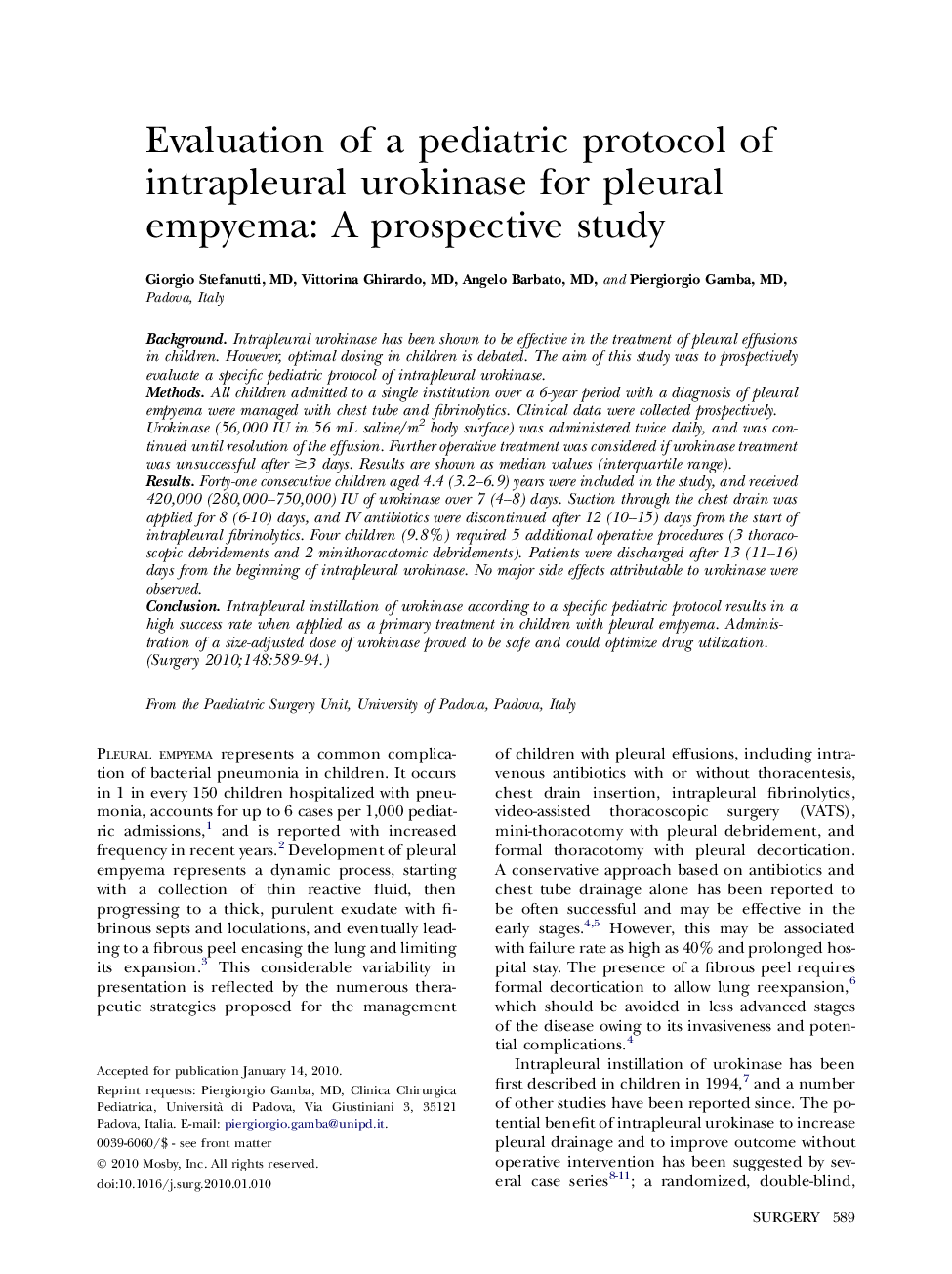| Article ID | Journal | Published Year | Pages | File Type |
|---|---|---|---|---|
| 4309172 | Surgery | 2010 | 6 Pages |
BackgroundIntrapleural urokinase has been shown to be effective in the treatment of pleural effusions in children. However, optimal dosing in children is debated. The aim of this study was to prospectively evaluate a specific pediatric protocol of intrapleural urokinase.MethodsAll children admitted to a single institution over a 6-year period with a diagnosis of pleural empyema were managed with chest tube and fibrinolytics. Clinical data were collected prospectively. Urokinase (56,000 IU in 56 mL saline/m2 body surface) was administered twice daily, and was continued until resolution of the effusion. Further operative treatment was considered if urokinase treatment was unsuccessful after ≥3 days. Results are shown as median values (interquartile range).ResultsForty-one consecutive children aged 4.4 (3.2–6.9) years were included in the study, and received 420,000 (280,000–750,000) IU of urokinase over 7 (4–8) days. Suction through the chest drain was applied for 8 (6-10) days, and IV antibiotics were discontinued after 12 (10–15) days from the start of intrapleural fibrinolytics. Four children (9.8%) required 5 additional operative procedures (3 thoracoscopic debridements and 2 minithoracotomic debridements). Patients were discharged after 13 (11–16) days from the beginning of intrapleural urokinase. No major side effects attributable to urokinase were observed.ConclusionIntrapleural instillation of urokinase according to a specific pediatric protocol results in a high success rate when applied as a primary treatment in children with pleural empyema. Administration of a size-adjusted dose of urokinase proved to be safe and could optimize drug utilization.
